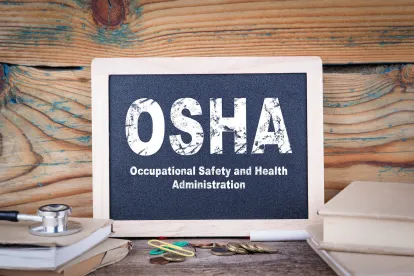On November 4, 2021, in response to President Biden’s Executive Order, the Department of Labor, through the Occupational Safety and Health Administration (“OSHA”), issued an Emergency Temporary Standard (“ETS”). You can read our prior article about the ETS here. Generally, the ETS mandates all employers with 100 or more employees to require employees be vaccinated against COVID-19 or undergo weekly testing. The ETS was immediately halted when the United States Court of Appeals for the Fifth Circuit issued a temporary stay. Then, numerous lawsuits were filed across the nation, and actions were pending in each of the other Circuit Courts. The Sixth Circuit “won” the multidistrict lottery, and was selected to hear the combined challenges, including OSHA’s emergency motion to dissolve the stay. You can read our prior article about the temporary stay here.
On Friday evening, December 17, 2021, the United States Court of Appeals for the Sixth Circuit dissolved the stay issued by the Fifth Circuit. The 2-1 opinion held the ETS was within OSHA’s existing authority and power to regulate viruses and promulgate standards for the health and safety of employees in the workplace in response to “a novel and dangerous worldwide pandemic.” Therefore, barring action otherwise from the Supreme Court, President Biden’s vaccinate-or-test mandate for employers with 100 or more employees is again in effect.
Next Steps: ETS Compliance
The Sixth Circuit still has yet to rule on the merits on whether the ETS exceeded OSHA’s statutory authority. Although petitioners have appealed to the Supreme Court to stay enforcement, the ETS and its enforcement will continue pursuant to the timelines originally set forth by OSHA unless and until the Supreme Court rules otherwise. If the Supreme Court refuses to hear appeals of the stay decision or to issue a stay, OSHA can proceed with its enforcement of the ETS while the Sixth Circuit determines the merits of the petitioners’ various legal challenges.
In response to the Sixth Circuit’s decision, OSHA released a statement saying, “To account for any uncertainty created by the stay, OSHA is exercising enforcement discretion with respect to the compliance dates of the ETS. To provide employers with sufficient time to come into compliance, OSHA will not issue citations for non-compliance with any requirements of the ETS before January 10 and will not issue citations for noncompliance with the standard’s testing requirements before February 9, so long as an employer is exercising reasonable, good faith efforts to come into compliance with the standard. OSHA will work closely with the regulated community to provide compliance assistance.” (emphases added)
In California and the 21 states with an OSHA-approved State Plan, the federal ETS is not automatically effective. Instead, the State Plans must notify OSHA whether they intend to adopt the federal ETS or their own COVID-19 emergency temporary standard that is at least as effective as the federal version. The notification originally was due within 15 days of publication of the ETS, but no states initially adopted the ETS because it was stayed immediately. It is unclear whether the stay tolled that deadline and whether the State Plans will adopt the ETS now or wait to see if the Supreme Court considers appeals of the stay decision. Employers with employees in states with State Plans should continue to monitor developments at the state level for further updates and consider drafting a written policy that complies with the ETS requirements in the interim.
The vaccinate-or-test mandate for employers with 100 or more employees is again in effect for employers with employees in states under federal OSHA’s jurisdiction. With the ETS enforcement deadline for compliance quickly approaching, employers should immediately begin drafting and implementing written mandatory vaccine/weekly testing policies if they have not already done so.





 />i
/>i

